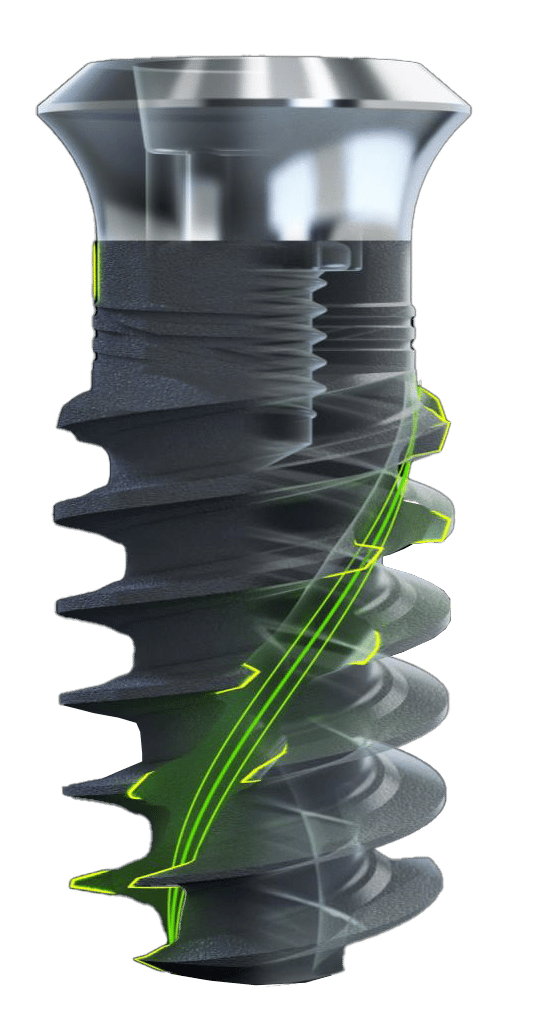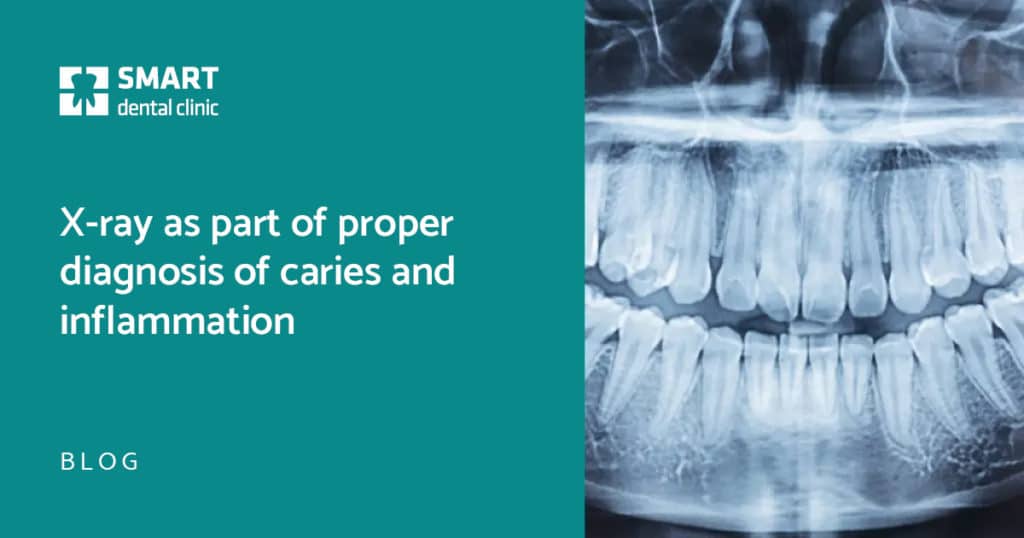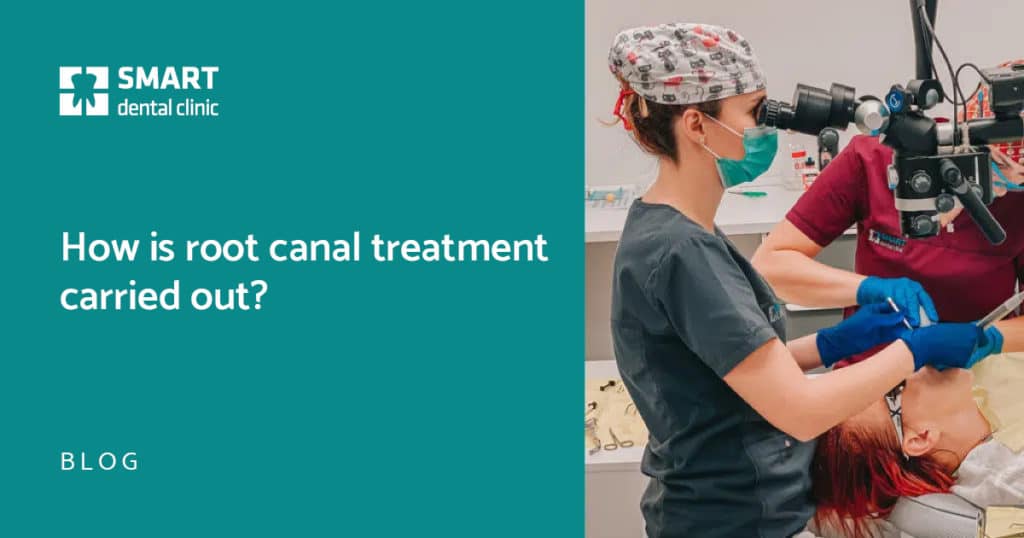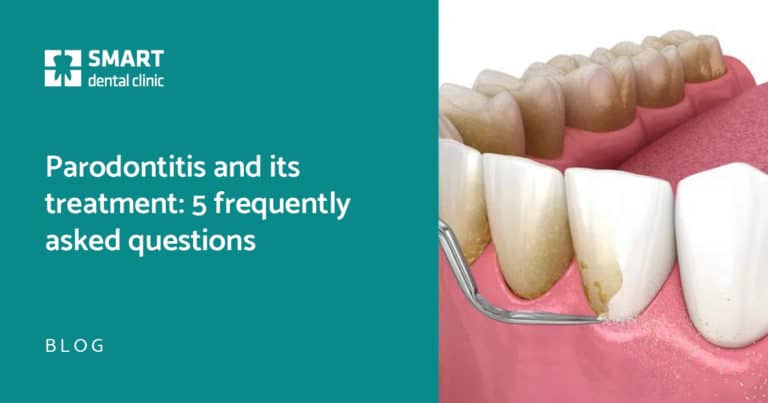Content of the article:
What is root canal treatment - endodontics?
Endodontics or endodontic treatment is a dental procedure that involves the treatment of dental pulp and root system or root canals of the tooth.
The aim of endodontics is to eliminate the cause of tooth inflammation and to preserve the tooth in the mouth.

When is endodontic treatment required?
There are small vessels and nerves in the root canals, which is why the procedure is often referred to by the popular name of “pulling or removing nerves”. The vessels and nerves permeate the bone and enter the dental pulp, which nourishes the entire tooth through root canals.
The problem occurs when this inner part of the tooth becomes damaged or infected, which might lead to inflammation. Inflammation in the dental pulp occurs most often due to deep and chronic tooth decay left untreated for a long time. There are many bacteria in the caries, whose toxins gradually penetrate the inside of the bone pulp tissue, which results in inflammation.
This can most often be manifested by acute pain or swelling, high sensitivity to pressure when eating, and also to thermal stimuli ( cold water, hot beverage, etc.). At this stage, it is very important to seek a dentist and to address the pain or inflammation as soon as possible.
Otherwise, bacteria can infect the bone all the way down to the tooth root, and then we are talking about the so-called periapical inflammation, which gradually destroys the bone and affects the overall health of the person.
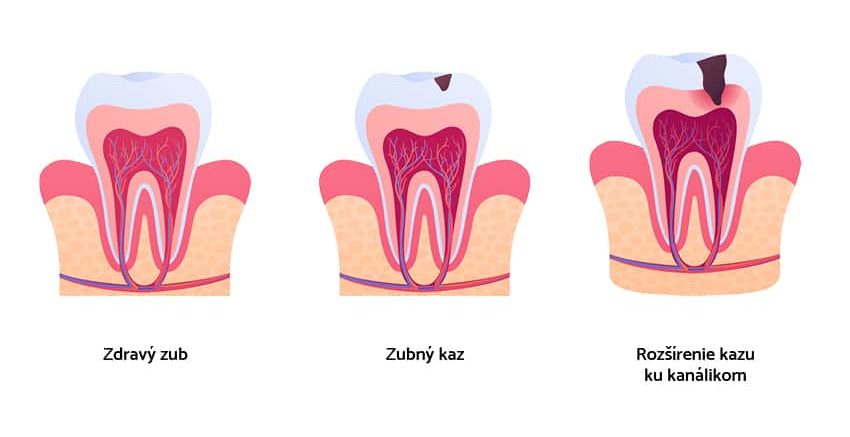
What happens during the root canal treatment?
Diagnostics
First of all, a correct and thorough diagnosis is important, as the symptoms of inflammation may vary. The physician uses techniques such as tapping the tooth, ice pack, bone pressure approximately in the area of the root end, and last but not least, very important is the so-called intraoral scan, which can provide the physician with a lot of important information.
Anesthesia
Before the procedure, we always use local anesthesia to eliminate pain.
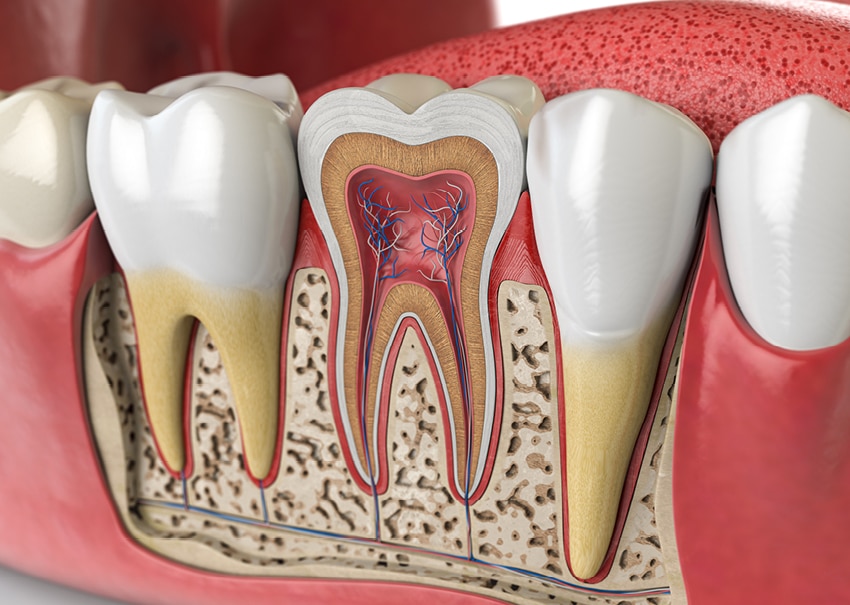
Access to dental pulp and canals
The dentist must first remove the caries or old, insufficient filling and clean the tooth so that they have a good access to the pulp cavity and then to root canals.
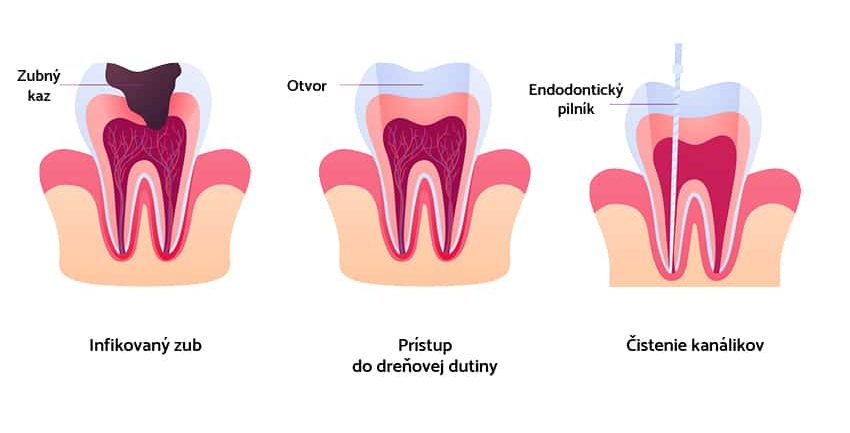
Clearing and cleaning of canals
The number of root canals varies depending on the teeth, with some having only one canal (such as the upper incisor) and some having 4 to 5 canals (the upper molars). The price of treatment depends on the number of canals. First of all, the physician must find all the canals of the tooth in question, which is why in our Smart Dental Clinic all physicians use magnification, whether it is a magnifying glass or a microscope.
All identified root canals need to be cleared up to the so-called apex, i.e., the end of the root, then expanded with special root tools and, last but not least, thoroughly disinfected with flushing disinfectant solutions to eliminate all bacteria.
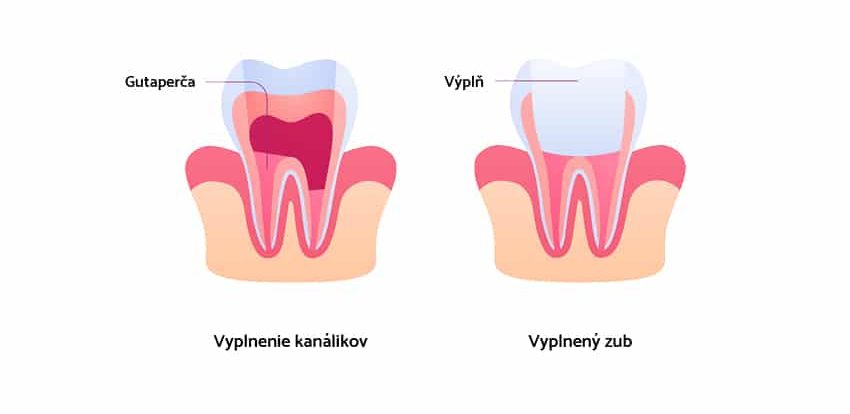
Canal fill
When the canals have been expanded to the desired width and chemically cleaned, they can then be hermetically sealed with a permanent root canal filler.
The canals must be properly filled all the way to their end. Subsequently, it is always necessary to perform another intraoral scan after the treatment, so as to evaluate the filler quality.
After treatment
After endodontic treatment, it is common for the tooth to be sensitive, especially to pressure. This lasts for between a few hours to a few days following the procedure. However, if the pain and the tenderness persist longer, it is important to see the treating physician.
Root canal treatment at Smart Dental Clinic
DID THE ARTICLE RESONATE WITH YOU?
BOOK AN EXAMINATION TODAY!
-
1 - canal tooth 160 - 180 €
-
2 - canal tooth 190 - 210 €
-
3 - canal tooth 260 - 280 €
-
4 - canal tooth 290 - 310 €

MDDr. Ján Šimon
Dentist, Bratislava

MDDr. Dana Václaviková
Dentist, Bratislava











